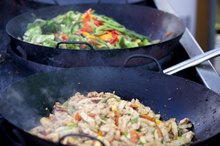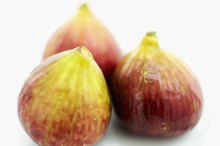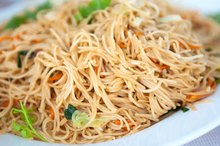Does Eating Salad Help You Lose Weight?
Salads fit well into an healthful diet -- you can make them from virtually limitless combinations or fruits and vegetables to avoid boredom, and prepare them in advance to grab on the go. Carefully prepared salads can not only help you lose weight, but also help you meet the daily recommendations for fruit and vegetable consumption, as well as for essential nutrients. Choose nutrient-dense ingredients for your salads, and eat a variety of healthy foods as part of a well-balanced diet for weight control.
Calorie Deficit
Losing weight means creating a calorie deficit, or eating fewer calories than you burn. Eating salad can help you lose weight if it helps you decrease your total calorie intake. Choose filling ingredients so that you are not as hungry and eat less, and keep your salads low in calories so that they provide fewer calories than the meal or snack that they are replacing.
Ingredients to Include
Nutritional Information in Knorr Vegetable Soup Mix
Learn More
To lose weight by eating salad, emphasize fresh fruits or vegetables because they are low in calories, but they help fill you up because they are high in water and dietary fiber. Also have some lean protein, which is another hunger-suppressing nutrient. Possible ingredients for a vegetable salad include lettuce, spinach, sprouts, tomatoes, cucumbers and beans, canned tuna or grilled chicken or turkey breast. For vegetarian-friendly protein, reach for beans, nuts or soy products, like tofu or tempeh. For a fruit salad, include fresh berries, grapes, orange or tangerine segments or cut pears, melons or apples. Cottage cheese can serve as a protein source.
Ingredients to Avoid
Salad dressing is high in calories, so only eat a small amount if you are trying to lose weight. Other ingredients to be careful of adding to your salad are top sources of calories in the typical American diet, which include full-fat cheese and high-fat meats, such as cold cuts and bacon, according to the 2010 Dietary Guidelines from the U.S. Department of Health and Human Services. If you are eating a fruit salad, do not add full-fat whipped topping, cream, sugar or coconut since these ingredients are high in calories.
Recommendations
Calories in Vegetable Salad
Learn More
A large salad can be a satisfying main course to help you lose weight if you eat it instead of high-calorie entrees. A side salad along with your main course can make a lunch or dinner more filling without adding many calories. For breakfast or a snack, have a fresh fruit salad with fat-free cottage cheese or yogurt for some protein. Instead of high-calorie baked goods or ice cream for dessert, have fresh fruit salad or try a more creative alternative, such as a molded salad made with sugar-free fruit-flavored gelatin and fruit.
Related Articles
References
- Centers for Disease Control and Prevention: Eat More, Weigh Less?
- Centers for Disease Control and Prevention: How to Use Fruits and Vegetables to Help Manage Your Weight
- U.S. Department of Health and Human Services; Dietary Guidelines for Americans; January 2010
- Harvard School of Public Health: Protein: Moving Closer to Center Stage
Writer Bio
Natalie Stein specializes in weight loss and sports nutrition. She is based in Los Angeles and is an assistant professor with the Program for Public Health at Michigan State University. Stein holds a master of science degree in nutrition and a master of public health degree from Michigan State University.









